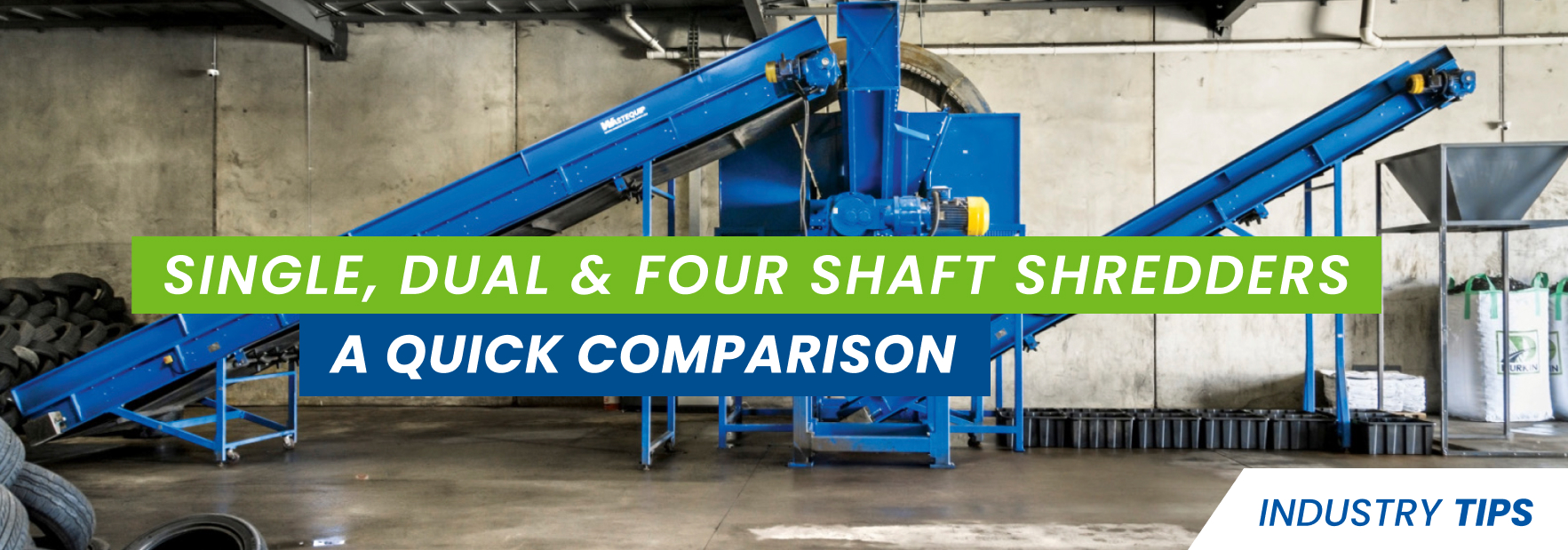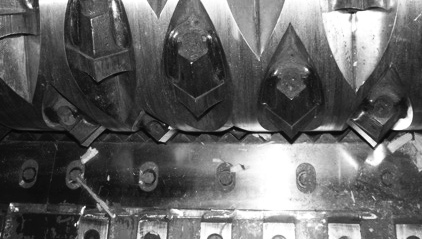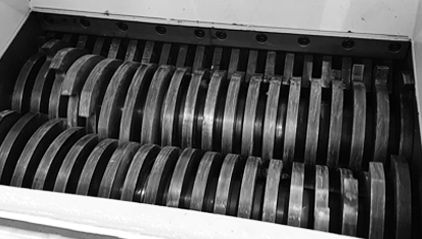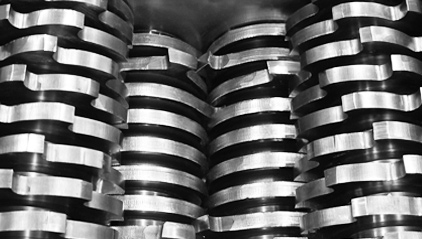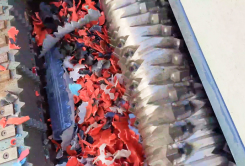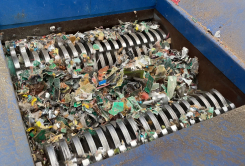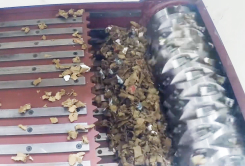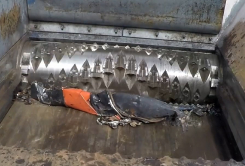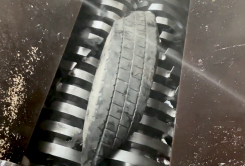Introduction
As waste management practices rapidly advance, the demand for high-performance shredders has never been more critical. Shredders are crucial in breaking down various materials, reducing their size, and preparing them for further processing or disposal. Whether you are dealing with plastic, e-waste, cardboard, metal, or tyres, choosing the right type of shredder is essential to ensure optimal results and cost-effectiveness.
When it comes to shredders, there are three main types to consider: single, dual, and four shaft shredders. Each type offers unique features and benefits, making them suitable for different applications and waste management requirements.
Single Shaft Shredders
KEY UNDERSTANDING
Single-shaft shredders are varying speed shredders capable of high volume throughput, widely used in various industries due to their versatility and efficiency. Rugged and reliable, these machines are available with high or low-speed configurations depending on processing material, with sized output determined by perforated screen size. These shredders have a rotating shaft with blades that cut and shred the materials. They are often used in the plastic industry for in-house recycling through waste processors shredding MSW and waste-to-energy plants.
ADVANTAGES AND LIMITATIONS
One of the key advantages of single-shaft shredders is their ability to handle a wide range of materials efficiently, and they can shred bulky items, such as plastic containers and large cardboard boxes. Single-shaft shredders offer high throughput rates, allowing for efficient processing and effective particle-size control through a sizing screen. Another key benefit is the way the cutters are mounted in the rotating drum allow them to be turned to get 4 uses from each single blade.
However, it is important to note that single-shaft shredders may have limitations when processing certain materials. For example, they are ineffective in shredding metal or tyres, which require more robust shredding capabilities, and may require frequent maintenance due to the higher stress on the single shaft.
Dual Shaft Shredders
KEY UNDERSTANDING
As the name suggests, dual-shaft (or 2-shaft) shredders feature two rotating shafts with interlocking blades. They are slow-speed shredders for heavy-duty size reduction, often used as primary shredders in recycling lines. They are known for their ability to process contaminated waste streams containing metal or non-shreddable materials. Particle size is determined by the width of the cutters and output at undetermined lengths. Dual-shaft shredders are commonly used for processing plastic, e-waste, cardboard, pallets, wood, drums, bottles, cans, organic materials, and tyres. They can be used in principle size-reduction applications where output sizes are not critical – such as abattoirs, tyres & E-scrap recycling facilities.
ADVANTAGES AND LIMITATIONS
Dual-shaft shredders are a popular waste management choice due to their effective shredding of rigid materials for size reduction. They offer automatic reversing capability and large heavy-duty cutters, which ensure long-lasting performance. These shredders are versatile and can handle multiple materials, making them a cost-effective solution for waste processing, such as product destruction and MSW.
Two-shaft shredders have a limited particle size range and typically shred materials into strips of varying lengths. Depending on the material, particle size can range from a few inches to a few feet. However, some applications require a more consistent and smaller particle size, which two-shaft shredders may not be able to produce.
Four Shaft Shredders
KEY UNDERSTANDING
When it comes to heavy-duty shredding in industrial settings where you need to reduce and destroy a material completely, four-shaft shredders are the go-to choice. These shredders integrate pre-shredding, precise cutting, and sizing in one pass, streamlining operations. They have a perforated screen to determine product size. Side shafts with cutters return oversized products for re-shredding through the main cutters. Product size is influenced by cutter width and screen perforation size. Four-shaft shredders are commonly used for processing continual volumes of challenging materials, such as timber, rigid plastics, medical waste and e-waste.
ADVANTAGES AND LIMITATIONS
Four-shaft shredders excel in industrial waste management, boasting efficient shredding capabilities at low speeds, thus reducing maintenance costs. They handle tough materials and generate a more uniform particle size compared to two-shaft shredders while maintaining a robust cutting mechanism. With different screens available for required throughput sizing, they are highly effective in industrial settings requiring consistent throughput rates, adept at handling large quantities of heavy materials efficiently.
They find extensive use in applications such as product destruction, organic waste processing, and timber processing, particularly for destroying sensitive materials like medical and E-waste. However, unless completelty refining materials into small particles or destroying electronics, a four-shaft shredder may be superfluous to your needs.
Choosing the Right Shredder for Your Specific Needs
It is essential to consider your specific waste management requirements when selecting the ideal shredder. Factors such as the type of material, desired output size, processing capacity, power consumption, maintenance needs, and cost should all be considered.
PLASTIC SHREDDERS
For plastic waste management, single and dual-shaft shredders can be suitable options depending on the specific needs of your operation. Single-shaft shredders are often preferred for processing bulkier plastic items to a more refined-sized particle, whereas dual-shaft shredders are ideal for handling mixed plastic materials and achieving consistent, less refined sizing.
Ideal Equipment: WT3080 | GL2180
Case Study: 4×4 Concepts
E-WASTE SHREDDERS
E-waste, which includes electronic devices and components, requires specialised shredders to ensure proper disposal and recycling. Depending on volume and sizing requirements, e-waste can be managed with single, dual, or four shaft shredders customised to suit your needs.
Ideal Equipment: WT2260 | FS10080
Case Study: Green technology Recycling
CARDBOARD SHREDDERS
Cardboard shredders are essential for recycling operations dealing with large volumes of cardboard boxes or cores. Single and dual-shaft shredders are effective for handling cardboard materials, but the choice depends on the desired output size and processing capacity required for your specific operation.
Ideal Equipment: WT40120 | GL2180
Case Study: Prima Print
METAL SHREDDERS
Regarding shredding metal, single-shaft shredders are suitable for processing light metals, while dual-shaft shredders offer more power and durability for heavier materials. These shredders can be customised to process metals such as aluminium, steel and copper, commonly found in waste scrap metal, thin-walled disposed steel, vehicle bodies, engine houses, aluminium cans, and other metal lights and fines from recycling processes.
Ideal Equipment: WT3080 | GL40130
TYRE SHREDDERS
Tyre shredders are designed to handle the unique challenges of shredding tires. Both dual and four-shaft shredders are suitable options for shredding tyres, as they can effectively break down the rubber and steel components. The choice between the two depends on the desired output size and processing capacity required for your specific operation.
Ideal Equipment: GL32120 | FS8080
Case Study: Oz Tyre Recyclers
Factors to Consider When Selecting a Shredder
When choosing a shredder, it is important to consider several factors to ensure optimal performance and cost-effectiveness. These factors include the processing capacity, power requirements, maintenance needs, and overall cost of the shredder.
CAPACITY
The processing capacity of a shredder refers to the amount of material it can handle within a given time frame. Choosing a shredder with a capacity that matches your waste management requirements is important. Consider the volume and type of materials you need to shred daily to determine the appropriate capacity.
POWER
Power requirements vary depending on the type and size of the shredder. Consider the available power supply in your facility and choose a shredder that can be easily accommodated without causing electrical issues or overloading the system.
MAINTENANCE
Regular maintenance is essential to ensure your shredder’s longevity and optimal performance. Consider the maintenance needs of different shredder types and choose one that aligns with your maintenance capabilities and schedule.
COST
The cost of a shredder includes not only the initial purchase price but also the operating costs, maintenance expenses, and potential downtime. Consider your budget and the long-term cost implications when selecting a shredder. It is important to strike a balance between upfront costs and long-term savings.
Conclusion
Choosing the right shredder is crucial for effective and cost-efficient waste management. Whether you need to process plastic, e-waste, cardboard, metal, or tyres, different shredders are available to meet your specific requirements.
- Single-shaft shredders are versatile machines that can handle high-volume throughput at varying speeds. They are best suited for processing “clean” material streams that require tight particle-size control.
- Dual-shaft shredders operate at slower speeds and are ideal for heavy-duty size reduction tasks where precise, finer output sizes are not required. They also handle contaminated waste streams containing metal or non-shreddable materials.
- Four-shaft shredders are designed for heavy-duty shredding applications and offer superior shredding capabilities and continuous throughput rates. They are suitable for processing mixed materials streams and challenging medical and e-waste materials.
When selecting a shredder, it’s essential to consider factors such as the type of material you need to process, desired output size, processing capacity, power consumption, maintenance requirements, and cost. Careful consideration of these factors will help you choose the optimal shredder to enhance your waste management practices.
Visit our shredders page to explore your options further, or contact our Equipment Specialists to find which of our shredders can benefit your waste management practice.

